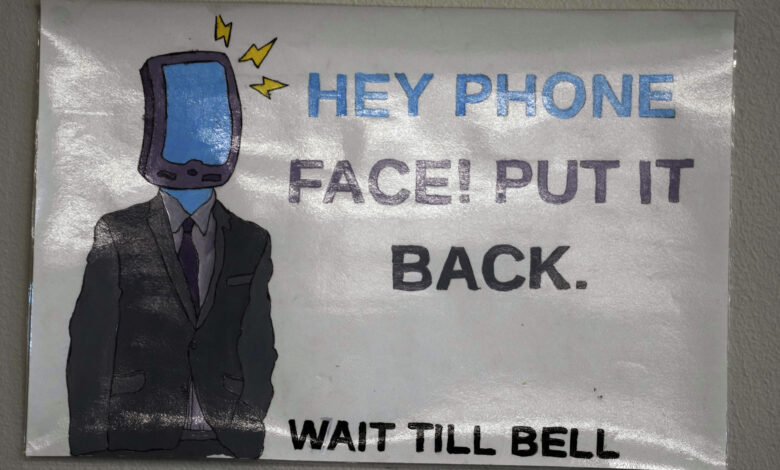Phones are distracting kids in class. Some states want schools to ban them

(AP) — The scene in classrooms around the country is similar: Kids are on their phones, even when school rules forbid it. Teachers say they routinely see students sending messages on Snapchat, listening to music on headphones under their hoodies and even watching Netflix in class, among countless other examples of how smartphones distract from teaching and learning.
The hold that phones have on adolescents in America today is well-documented, but teachers say parents are often not aware to what extent students use them inside the classroom. Increasingly, educators are speaking with one voice on the question of how to handle it: Ban phones during classes.
A growing number of leaders at the state and federal levels have begun endorsing school cellphone bans and suggesting new ways to curb access to the devices.
— KANSAS: A bill introduced would require school districts to ban student use of any “communication devices” during school hours unless authorized by a teacher for classwork or by the school for special circumstances.
— OKLAHOMA: The state currently has several cellphone related bills moving through its Legislature. The Senate Education Committee passed a proposal earlier this month that would offer public school districts $100,000 to $1 million, based on enrollment size, to adopt a phone-free campus policy. Two other proposals — House Bill 3913 and Senate Bill 1321 — would provide grants to public middle and high schools to “incentivize phone-free spaces for student learning.”
— Two U.S. senators — Tom Cotton, an Arkansas Republican, and Tim Kaine, a Virginia Democrat — introduced legislation in December that would require a federal study on the effects of cellphone use in schools on students’ mental health and academic performance. Theirs is one of several bipartisan alliances calling for stiffer rules for social media companies and greater online safety for kids.



